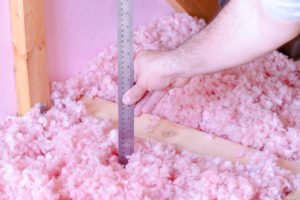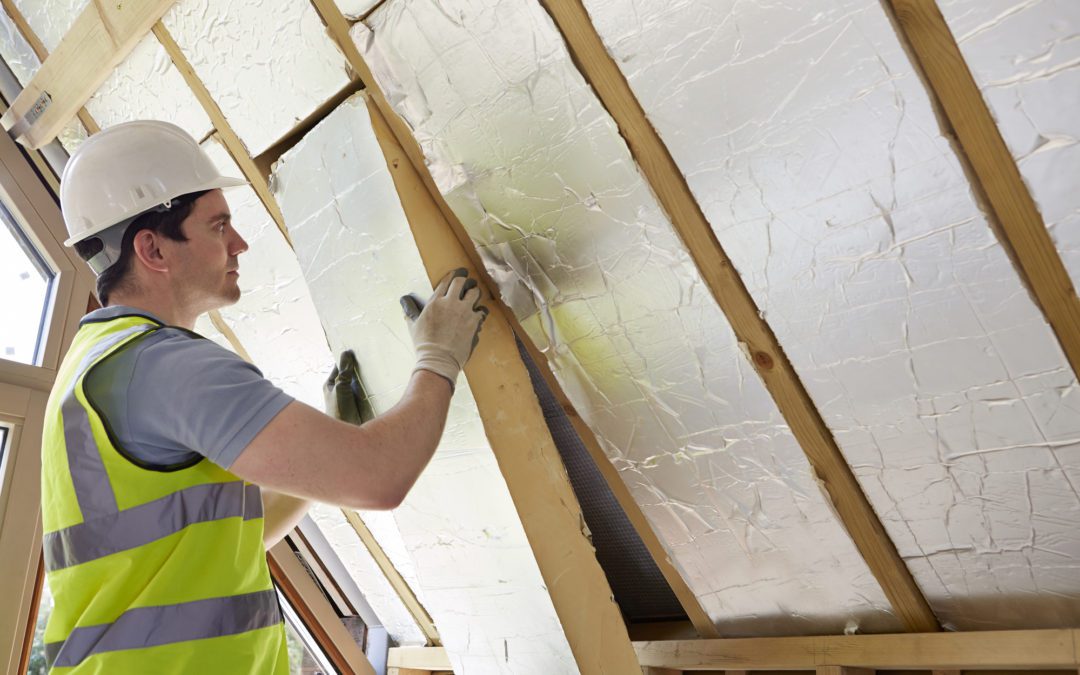Does your home have the appropriate amount of insulation in all the right spaces? Without good insulation, your home becomes very energy inefficient. In the winter, heat will escape through the walls and your home’s attic to the colder environment outside, making your furnace systems work harder. In the summer, it won’t be easy to retain cold air, putting unnecessary strain on your air conditioning systems. With insulation that has an R-value appropriate for your climate, however, you can keep hot and cold air where it belongs — inside your house, keeping you and your family comfortable.
What does the term “R-value” mean, and how do you select insulation that meets your needs, particularly when you need to re-insulate an attic? Let’s explore what the R-value numbers mean, then consider what digits match what you need.
What is R-Value?
Put simply, the R-value of insulation measures how good it is at resisting the movement of heat energy through the material. As a result, insulation that yields a higher R-value is more energy-efficient because it traps more of the heat energy or cold air within your home. Calculating the R-value of any given insulation material requires a complex mathematical equation and knowledge of the insulation’s physical properties, such as something called “heat flux.”
However, for the average consumer, there’s no need to worry about a math test when all you want is to buy the right insulation for your home. Materials come with their R-values pre-printed on their packaging or specification sheets. You’ll typically see this expressed as “R-value per inch” because the industry measures efficiency in terms of the insulating effect created by each additional inch of material.
The Right Insulation R-Value Changes Based on Where You Live
What is a good R-value? According to the US Department of Energy, the answer depends on many factors, but the primary issue concerns where you live. While you could stuff your attic with as much insulation as possible, that is not a cost-effective method, and you might not see the improvements you wanted. Consulting the DOE’s official R-value map will help you determine what R-value is good for where you live and what is too weak to resist the seasonal changes in the climate where you live. Keep in mind that the right value also changes based on the heating system your home uses.
For example, most of California, including Santa Rosa, lies within the Department of Energy’s “Zone 3” on the R-value map. When homeowners want to add attic insulation in this zone, they should look for the following:
- An R-value of 38 if the home uses electric heating, oil-fired furnaces, or baseboard heating.
- An R-value between 30 and 38 if the home uses natural gas heating.
- An R-value of up to 49 for liquid propane furnaces.
The numbers above assume that you have an attic that already has some insulation. If you have a completely uninsulated attic, you will need to look for an insulation R-value as high as 60 to stop heat loss properly. An HVAC contractor can help you make sense of the specific numbers for your home.
If you have existing insulation, do you need to remove it to install something with a better R-value? No. You can even improve the R-value of your attic space by combining different types of insulation to reap the benefits of different materials. Such an effort also avoids the time wasted during insulation removal.
What Kind of Insulation Should I Use for the Best R-Value?
There are many different kinds of insulation on the market today, including:
- Fiberglass blankets/batting
- Rigid foam board insulation
- Loose-fill insulation
- Spray foam
Which one is best for you? Batting usually has the highest R-value per inch, but blow-in and loose-fill insulation can be more cost-effective. Again, you will need to consult with an HVAC or insulation-focused contractor to determine the most appropriate solution. An examination of your attic space and measurements concerning heat loss will be important factors in determining the best insulation for your home. For attics, spray foam, blow-in insulation, and fiberglass bats and mats are among the most common options. Foam board and concrete block insulation are intended for other kinds of spaces.
Choosing a Contractor to Install Attic Insulation
Not all types of insulating materials are the same, and care in their installation is essential for ensuring their effectiveness. When you want to follow Department of Energy insulation R-value guidelines to stop losing air through your attic, the right HVAC contractor can make all the difference. From suggesting the appropriate material to following through with a quick installation, choosing a professional service provider is simpler, less stressful, and faster than the DIY route. Find a local option today to start enjoying lower power bills soon.

